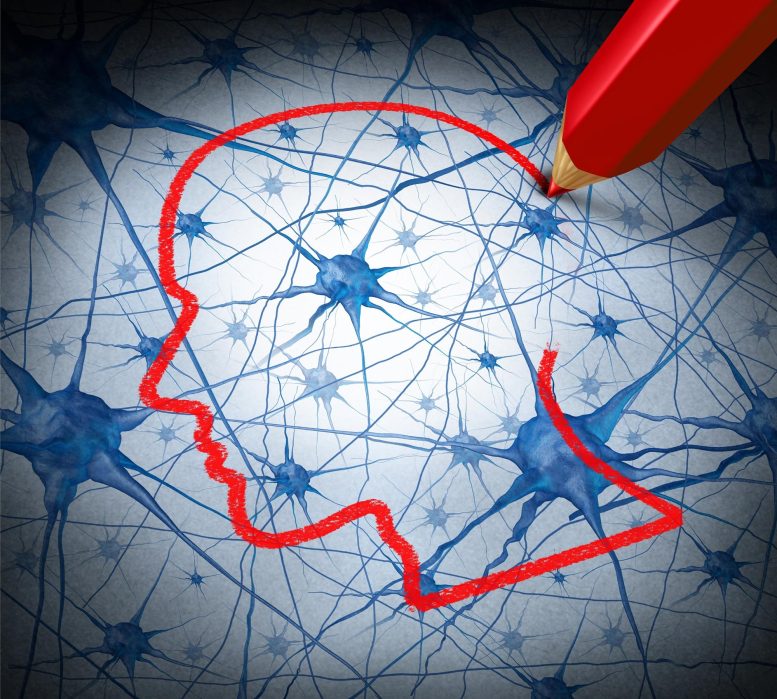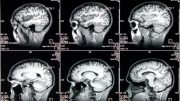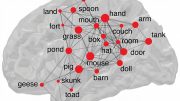
Study Illuminates Trade-Off Between Complex Words and Complex Sentences
A team of cognitive scientists and doctors finds that patients with aphasia use different cognitive tools to compensate for language deficits.
Widespread public attention was brought to the neurological condition aphasia by Bruce Willis’s recent announcement that he was retiring from acting. While just about everyone struggles occasionally with finding the right word or tripping over their sentences, aphasia patients can lose the ability to comprehend language entirely.
Though Willis hasn’t confirmed it, some doctors suspect that he may have an especially brutal and degenerative form called primary progressive aphasia (PPA).
Scientists have long understood that there are several subtypes of PPA. While some versions come with lexical deficits, affecting a person’s ability to access words, others cause syntactic deficits, making it difficult to construct sentences.
Cognitive scientists and doctors from MIT and Massachusetts General Hospital (MGH), working as a collaborative team, have now developed a quantitative way to identify these different deficits. In the process, they illuminated a fundamental trade-off the brain makes when speaking between grammar and vocabulary. Their findings show that PPA patients with grammar deficits use richer, more complex vocabulary to compensate for their syntax struggles and vice versa.
The results were published recently in the Proceedings of the National Academy of Sciences.

Researchers asked study participants to describe this busy picnic scene, and then calculated an average word frequency and syntax frequency for each participant. The results enabled researchers to distinguish among aphasia patients with lexical deficits versus syntactical deficits, and also revealed a tradeoff between complex vocabulary and syntax in healthy English speakers. Credit: Image courtesy of the researchers
It’s a crucial first step in understanding how the language centers of the brain may be processing grammar and vocabulary independently, according to senior author of the research and MIT professor of brain and cognitive sciences Edward Gibson.
The research also revealed new insights into healthy brain function. “From a deficit in patients, we were able to find a basic property in healthy language production,” says Neguine Rezaii, the study’s lead author and a neuropsychiatrist at MGH. She adds that improved methods for identifying deficits in aphasia patients could help increase access to disease diagnosis and inform our understanding of how other neurological conditions affect language production.
Measuring complexity
Based on prior research into those suffering from stroke-induced aphasia, the scientists hypothesized that the speech patterns of PPA patients would reflect this trade-off between complex words and sentences. For example, if one can’t recall the word sailboat, they might construct a more roundabout phrase — “the thing that moves in water with wind,” for example — to get their meaning across.
To measure lexical complexity, the scientists relied on a well-established concept called word frequency. High-frequency words — “the” being the classic example — are those that are more commonly used and easily accessible. Low-frequency words, in contrast, are those that are less familiar, often richer, and, for aphasia patients, the first words to go. Gibson gives the example of zebu versus zebra. Both are hooved animals found in Africa, but one of the words requires looking at a dictionary.
To quantify the frequency of different words, the researchers analyzed a database called Switchboard, which consists of random telephone conversations from over 500 American English speakers. They edited out the typical stutters, errors, and false starts of normal speech, and then analyzed how often different words appear.
Previously, though, there was no equivalent measure for syntax complexity.
“For words, we always had word frequency, but syntax frequency is something new to this project,” says Rezaii.
While analyzing Switchboard, the researchers also classified each word in terms of its speech type to create a massive list of possible grammar rules. Subject + verb (“She left”) was one common construction. Subject + verb + object (“She left them”) was another one. With their list of possible rules in hand, the team could quantify the frequency of different sentence structures and syntaxes to get a measure that was comparable to word frequency.
Quantifying the trade-off
With their metrics in place, the team asked participants in the study to describe a scene doctors sometimes use to diagnose aphasia: a drawing of a busy family picnic. The researchers then calculated an average word frequency and syntax frequency of each sentence for each participant.
Just as hypothesized, among 79 PPA patients — with healthy speakers to control for other factors that might affect language, such as age — there was a clear negative correlation between word and syntax frequency depending on which subtype of PPA they had. Patients with lexical deficits used low-frequency, complex sentence structures, while those with grammar deficits used more low-frequency, descriptive words.
Next, the researchers tested the same method on a sample of healthy English speakers. Surprisingly, the results held.
“It’s pretty cognitively demanding for the brain to use both complex syntax and complex words in one sentence,” says Rezaii, explaining that even those without aphasia seem to be making this trade-off between vocabulary and syntax. The difference, she says, is that healthy speakers can make a different trade-off sentence-to-sentence. Aphasia patients, though, have no choice and must constantly compensate depending on their deficit.
Gibson says there are several possible explanations for this trade-off. Perhaps our brains are trying to create language that’s unambiguous and clear, but also efficient. Or perhaps there’s just not enough capacity to construct complex sentences that also include unusual words. Further studies, he says, are necessary to disentangle the various processes involved in different facets of language production.
For PPA patients, though, this is a major step forward.
“The way people have been categorized by clinicians, it’s very informal,” says Gibson. “This potentially provides formal, quantitative, computational ways you can analyze the speech of a person to figure out what category of deficit they might have.”
Reference: “A syntax–lexicon trade-off in language production” by Neguine Rezaii, Kyle Mahowald, Rachel Ryskin, Bradford Dickerson and Edward Gibson, 16 June 2022, Proceedings of the National Academy of Sciences.
DOI: 10.1073/pnas.2120203119









Be the first to comment on "Patients With Aphasia Use Different Cognitive Tools To Compensate for Language Deficits"